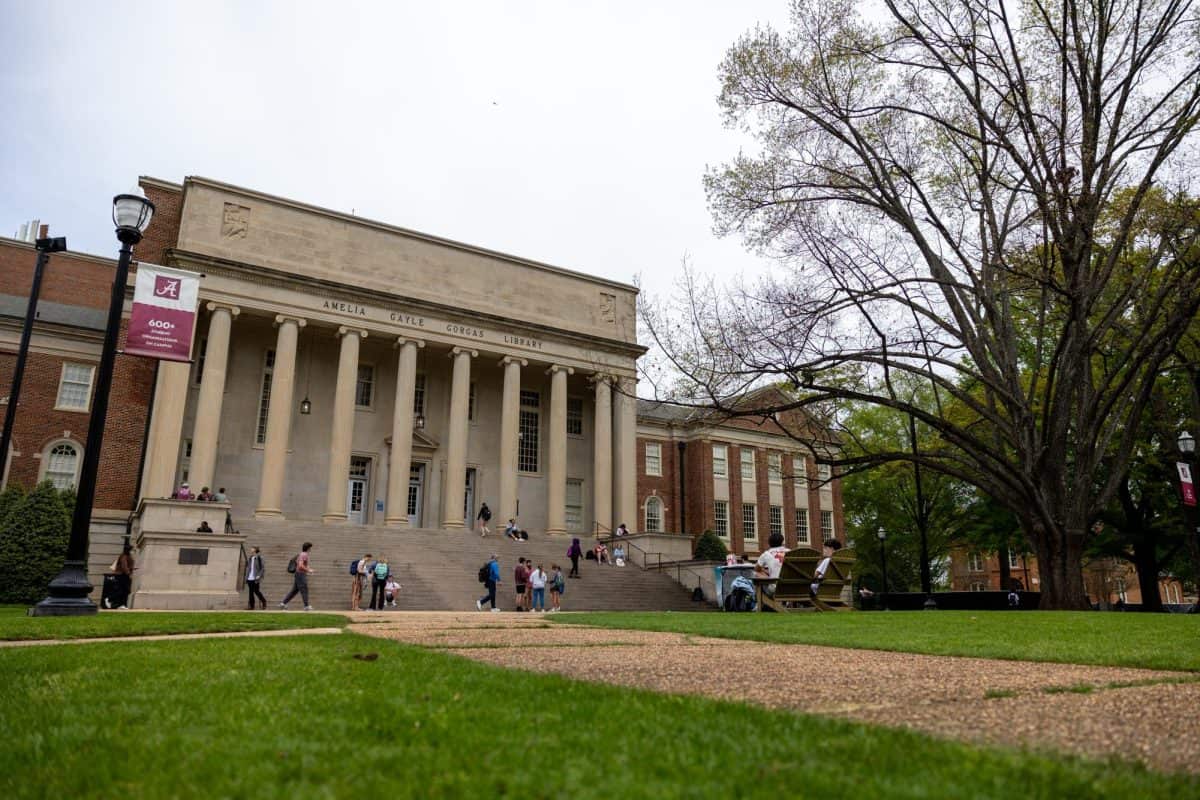Ukrainian faculty at the University has hosted informational tours in Gorgas Library throughout November teaching about the history of the Holodomor famine as the Russia-Ukraine war nears its third year. The tour is the first awareness event in University history promoting awareness about the Holodomor, which left millions of Ukrainians dead between 1932 and 1933.
The Holodomor was a man-made famine conducted by the Soviet Union between 1932 and 1933 that killed an estimated 3.5 million Ukrainian civilians. Ukrainian and international scholars have dubbed the famine a genocide due to the majority of the victims being Ukrainian.
“In the 1930s, the Soviet government planned for Ukrainian farmers to give a specific amount of crops. When the government demanded more, people began to hide crops so their families could survive,” said Anna Mariya Basauri Ziuzina, an instructor who directed the tour. “Farmers tried to hide seeds to plant crops for next year, and volunteer groups would poke into the walls and floors of ordinary peoples’ homes to see if they were hiding food.”
Posters highlighting the chronology of the Holodomor lined the first floor of Gorgas, describing how the Soviet Union under Stalin conducted the famine and why Ukraine was so heavily targeted. QR codes were available that linked to audio testimony of Holodomor survivors.
The exhibition began Nov. 6, with tours in the Gorgas library every Tuesday and Friday until Nov. 22.
“My great grandmother was not a rich woman but sold all her jewelry to feed her daughter. When walking from one city to another, some men on a wagon came by and offered her daughter a ride to the city,” Ziuzina said. “My great grandmother said yes, but then she realized that those people might eat her because the famine was so severe, so she chased down the wagon and got her daughter back.”
The exhibition was the first historical event by the Ukraine Initiative Group, founded by Ziuzina and her husband Oleg Kyselov, both Ukrainian faculty members in the religious studies department.
“This event is the first historical one, but it depends how you define history,” Kyselov said. “In the spring, we talked about Ukraine in Eurovision and had events about p’yatykhatky, the Ukrainian easter eggs, but those were two-hour events.”
Kyselov remarked that the permanent nature of the exhibit made a larger impact on campus than previous events.
“Because it stands here for three weeks, and all the students who get inside have a chance to look at it learn something more, it gets to more students,” Kyselov said.
Karolina Willicott, a Ukrainian-American student who attended the exhibition tours, remarked on the history.
Ziuzina and Kyselov said they were proud of the success of the exhibition in spreading awareness about Ukrainian history, despite hardships in faculty and student exchanges with Ukraine due to the Russian invasion of Ukraine in 2022.
“We were thinking about collaboration with Ukrainian universities for this project, because this is what people normally do when they want to collaborate with other countries,” Ziuzina added. “But in our case, it’s impossible. We can’t bring faculty over here or students over there because of the war, so now it’s more about telling UA students about Ukraine.”
The Ukrainian government’s prohibition on men between the ages of 18 and 60 from leaving the country along with the destruction of a fifth of Ukrainian higher education institutions since the start of the full-scale war in 2022 have hindered faculty and student exchanges with the United States.
“We organized this group to raise awareness about what’s going on in Ukraine,” Ziuzina said. “At the end of the day, the goal is for a UA in UA project.”









